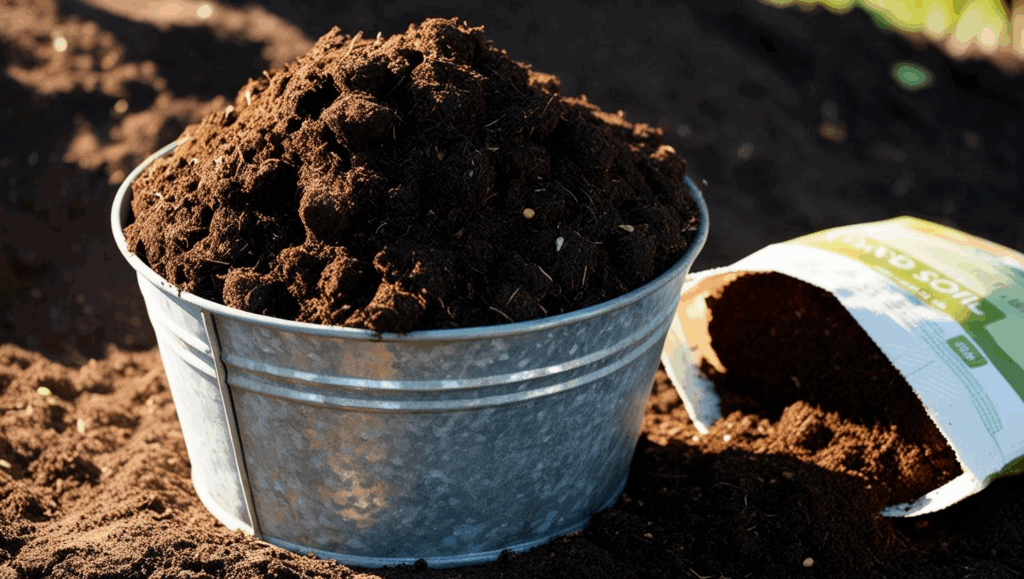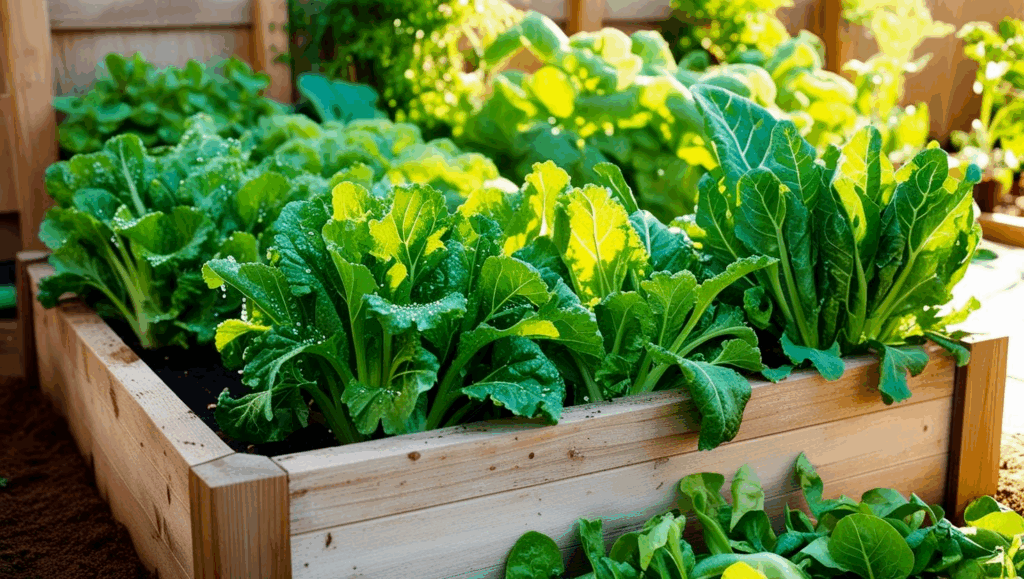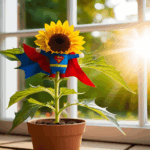Creating a thriving garden in the city starts with getting the soil mix right. In urban environments, where space is limited and soil may not be as rich, using a well-draining and nutrient-packed soil mix can make all the difference. When you use the best soil mixes for raised bed gardening, you’re building a lifeline for those veggies and flowers you’re excited to grow.

🧪 Basic Soil Mix Recipe for Raised Beds
A common recipe for an effective urban garden includes topsoil, compost, and either peat moss or coconut coir. These ingredients are key players:
- 🪨 Topsoil forms the foundation, a stable base for plant roots.
- 🌱 Compost is the nutrient powerhouse, boosting growth with organic matter.
- 💧 Peat moss or coconut coir manage moisture, helping the mix retain just enough water without drowning your plants.
For even more ideas, watch This Simple 3-Ingredient Raised Bed Soil Mix is a GAMECHANGER— it’s an easy way to master the basics and boost your garden’s success.
🌀 How to Improve Drainage and Aeration with Soil Additives
Adding vermiculite or perlite can boost aeration and drainage — a must-have for raised beds. This ensures plant roots get the oxygen they need while preventing water buildup and root rot.
🏙️ The Best Soil Mixes for Raised Bed Gardening
Don’t forget—your perfect mix might look different depending on your location, sunlight, and plant choices. Customizing your soil mix is the smart move. Urban gardening comes with its own challenges, like heat from pavement or limited nutrients. Understanding these factors helps your garden thrive in city conditions.
🧺 Popular Soil Mix Recipes for Raised Bed Success
Using the best soil mixes for raised bed gardening is like laying a strong foundation for your plants — just like a skyscraper needs solid ground.
🥗 50/50 Mix
A simple favorite: equal parts topsoil and compost. It’s easy, reliable, and provides a balanced base for most plants.
🌾 3-Way Mix
Great for drainage: topsoil + compost + coarse sand. Ideal for areas that retain too much water after heavy rain.
🌰 Triple Mix
Need to conserve water? Use topsoil + compost + peat moss or coconut coir. It holds moisture while supporting good root health.
🧤 Mel’s Mix
Designed specifically for raised beds: 1/3 compost + 1/3 peat + 1/3 vermiculite. Great balance of moisture retention and breathability.
A common question is the difference between garden soil and raised bed soil. Garden soil can be too dense. Raised bed mixes are fluffier and drain better — perfect for compact city gardens.

🛠️ Key Soil Ingredients and Customizing Your Mix
The quality of your soil ingredients makes all the difference. Here’s a breakdown of what works:
🪴 Topsoil
Look for a mix with a blend of sand, silt, and clay. It should be stable but allow for drainage.
🌿 Compost
The MVP of your garden! Full of nutrients and structure, compost feeds your plants and boosts overall soil health.
💦 Moisture Retention Additives
Use peat moss or coconut coir to help soil hold water in hot, dry conditions. Coconut coir is more sustainable 🌎, while peat moss is widely available.
🌬️ Aeration Boosters
Vermiculite and perlite help keep soil loose and breathable. Think of them like air pockets in bread dough—plants love the space to stretch out.
⚖️ Managing pH and Nutrients
Check your pH levels using a simple kit. 🧪 Add lime to reduce acidity or composted manure to enrich the soil naturally.
🧑🌾 DIY Soil Mixes: Create Your Own Raised Bed Blend
Building your own mix lets you adjust it for your specific needs. Whether it’s compost-heavy for veggies or sandier for drought-tolerant plants, tailor it to what your garden craves.
The best soil mixes for raised bed gardening are often the ones you create yourself. Experimenting gives you more control and better results.
💰 Practical Tips for Budget-Friendly and Sustainable Garden Beds
You don’t need a big budget to build great soil. Here’s how to save:
- 🛒 Buy in bulk from nurseries or landscape centers.
- 🪵 Layer it up: Use branches, logs, or coarse fill on the bottom, premium mix on top.
- 🏘️ Source locally to reduce costs and support your community.
Ongoing care helps keep your beds fertile:
Add compost each season to refresh nutrients and reduce the need for chemical fertilizers.
❓ FAQ About Soil Mixes for Raised Bed Gardening
🪴 What is the best soil mix for raised beds?
The best mix combines topsoil, compost, and moisture-retaining ingredients like peat moss or coconut coir. Adjust for your climate and plant types.
🌱 Can I use garden soil in raised beds?
Not ideal. Garden soil is often too dense. Raised bed mixes are lighter, allowing better drainage and root growth.
📦 What is Mel’s Mix?
Mel’s Mix = 1/3 compost + 1/3 peat moss + 1/3 vermiculite. It’s popular for its moisture balance and airiness.
💡 How can I fill a raised bed cheaply?
Use local bulk soil, layer with coarse base material, and make your own mix using compost and additives. It’s affordable and customizable.




